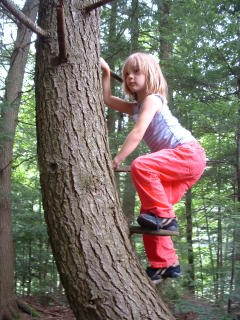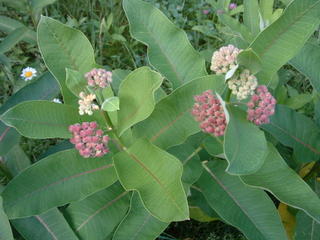For this I believeI believe in kitchen-table democracy. I believe in small “d” democracy, the kind where parents sit around the table and argue with each other about which candidate they should vote for, the kind when mothers gripe together about the schools not being good enough and plot to start new ones, or they talk to their kids about the Constitution and what it means. I believe in small “d” democratic institutions: PTA's, school boards, neighborhood associations, and the League of Women Voters. I believe in the kind of democracy you can take out on the street, the kind that gets you talking to your neighbors up and down the block and strangers across town too, the kind that gets kids excited and involved enough to get into the voting booth with you and learn to pull the lever.
Last night I attended the last PTA meeting of the year at my daughter’s elementary school, the Albany School of Humanities, on Whitehall Road in Albany, New York. At that meeting, I spoke on the need to allow the child acting as master of ceremonies at the end-of-year variety show to say, “Them was good,” without having her grammar “corrected” by the adults coordinating the program. Another parent at the PTA, felt that such ungrammatical speech was a poor reflection on the child, the school, and the PTA, which sponsored the program. Certainly, I argued, there is a place for proper, grammatical, speech, but so too is there a need to create a place for speech that reflects ethnic background, the popular culture, the culture of youth, and creative use of language, especially in a school community that is diverse, with children from over a dozen countries. Discussion ensued for some time, and ultimately, there was general agreement that children need to learn both, and to distinguish when to use each kind of speech to best effect.
Walking home from the meeting, hanging onto my two-year-old son, with my husband, carrying our five year-old daughter, soon to be Kindergarten graduate, on his shoulders. I felt like a true member of a community, with valuable democratic institutions. The PTA is not democracy with a big “D”, but with a small “d”, the kind I’d learned about as a teenager from parents who took the time to involve me and my peers in public meetings on educational issues that affected us.
One woman, Alison Des Forges, who has since gone on to receive a McArthur genius award for her work with Africa Watch, stands out in my mind. Her high-profile efforts at the UN have been recognized, but perhaps she should also know about the impact she had on those of us she taught the lessons of democracy with a little “d." Alison Des Forges helped me and a group of my peers, when we were just high-school freshmen, to attend a public hearing on an effort to ban several books from the Buffalo School district library.
I don’t remember the details of the objections to the book. They don’t matter now. What matters is that she initiated us into the realm of public participation in decision-making. She led us, with the U.S. Constitution as a backdrop, into the practical realm where decisions are made. She facilitated an opportunity for us to speak in public, be heard in our own communities, and then beyond when our speeches were published in the Humanist Magazine. While we may not have influenced the outcome of the meeting, she gave us our first glimpse at the inner workings of decision-making institutions at the community level, where decisions are made that impact our daily lives and the lives of our children. She showed us that to care is to be involved.
This was a critical rite of passage for me. As a parent now, taking my five-year-old daughter to public meetings, and into the voting booth with me, I realize the significance of being involved from childhood in democratic decision making. She laid the foundation for me to find a voice, the courage to speak, and the practical know-how of getting involved.
Until the meeting last night, I hadn’t reflected much on where I’d learned to speak out and express my opinions at a public meeting. I became even more grateful to Alison Des Forges' kitchen table, a neighborhood meeting place, a small “d” democratic institution, where I learned about little “d” democracy. We must each, when it is our turn, take it out into the world, but I believe –- as Alison showed me -- that democracy begins at home.











